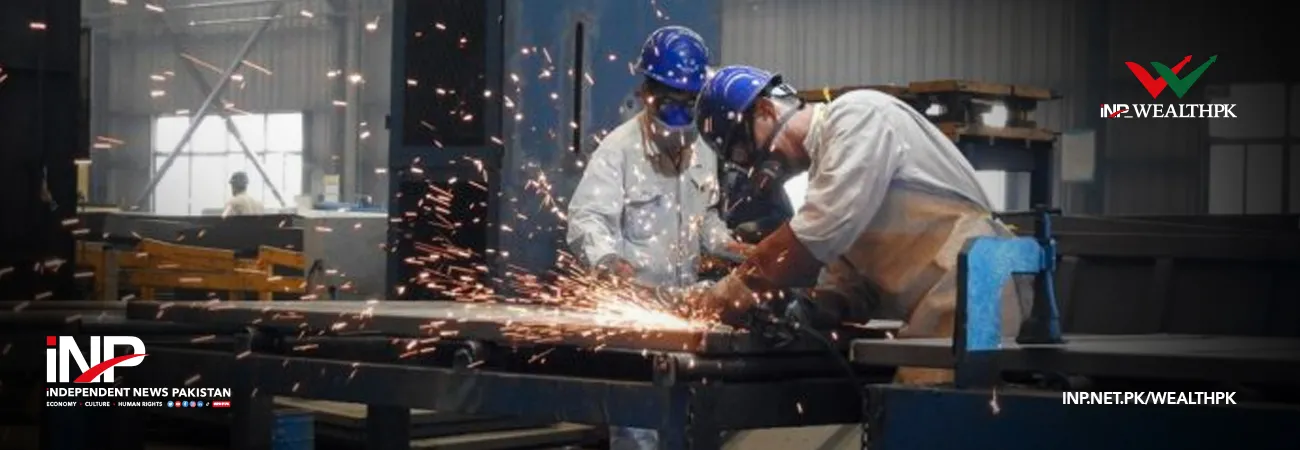INP-WealthPk
Amir Khan
In a promising turn of events, Pakistan's large-scale manufacturing (LSM) sector has exhibited signs of recovery, as the recent data released by the Pakistan Bureau of Statistics indicates a positive growth of 2.52 percent. This growth marks a significant reversal of the previous 11 months of contraction in the sector, said Ms Neelofur Hafeez, Joint Secretary at the Ministry of Industries and Production, while talking to WealthPK. She said the LSM's resurgence could largely be attributed to increased production in the garments sector, followed closely by improvements in the food, petroleum, and pharmaceutical industries. "For much of the past year, production in the LSM sector had been on a decline, with a 10.26 percent contraction experienced in FY23. However, the new data shows a positive trend, suggesting a reversal of fortunes. In FY22, the LSM expanded by an impressive 11.7 percent year-on-year, and this recovery hints at the resilience of the manufacturing sector," she pointed out. The LSM resurgence is evident in various subsectors. In August 2023, 10 out of 22 sectors witnessed a positive growth.
The most notable sectors driving this recovery include food (7.95 percent), wearing apparel (41.21 percent), pharmaceuticals (41.81 percent), petroleum products (30.81 percent), non-metallic mineral products (11.98 percent), machinery and equipment (14.61 percent), and football (27.90 percent). "These sectors are experiencing an upward trajectory, a positive sign of economic revival. However, it is essential to acknowledge that several sectors in the LSM industry continue to face challenges. Tight financing facilities and ongoing inflationary pressures are persistently hindering the production activities of these sectors. "Consequently, these challenges have led to a significant number of job losses, reflecting the economic difficulties faced by the manufacturing industry." She highlighted that there were both positive and negative growth trends in specific sectors. Notably, the textile sector's production shrank by 16.20 percent in August, with significant negative growth in yarn (29.88 percent) and cloth (17.21 percent). However, the production of garments witnessed a substantial growth, increasing by 21.21 percent in the same period.
"In the food group, wheat and rice production declined slightly by 0.51 percent in August, while the production of cooking oil surged by an impressive 33.35 percent, with vegetable ghee increasing by 8.48 percent and blended tea by 21.97 percent," she elaborated. She further elaborated that petroleum products posted a positive growth of 30.81 percent in the second month of 2023-24, driven by increased production of petrol (22.22 percent) and high-speed diesel (58.66 percent), along with LPG (11.58 percent), while most other petroleum products recorded a negative growth. In the same period, there was a notable decline of 2.17 percent in the production of iron and steel, while the electrical equipment witnessed a significant drop of 15.81 percent. Conversely, the production of fertilizers saw a modest surge of 1.37 percent, while the production of rubber items experienced a negative growth of 8.50 percent. As the LSM sector shows promising signs of recovery, the nation remains cautiously optimistic about its economic prospects, while also recognizing the need for continued support and solutions to address the challenges that persist within this vital industry.
Credit: INP-WealthPk













